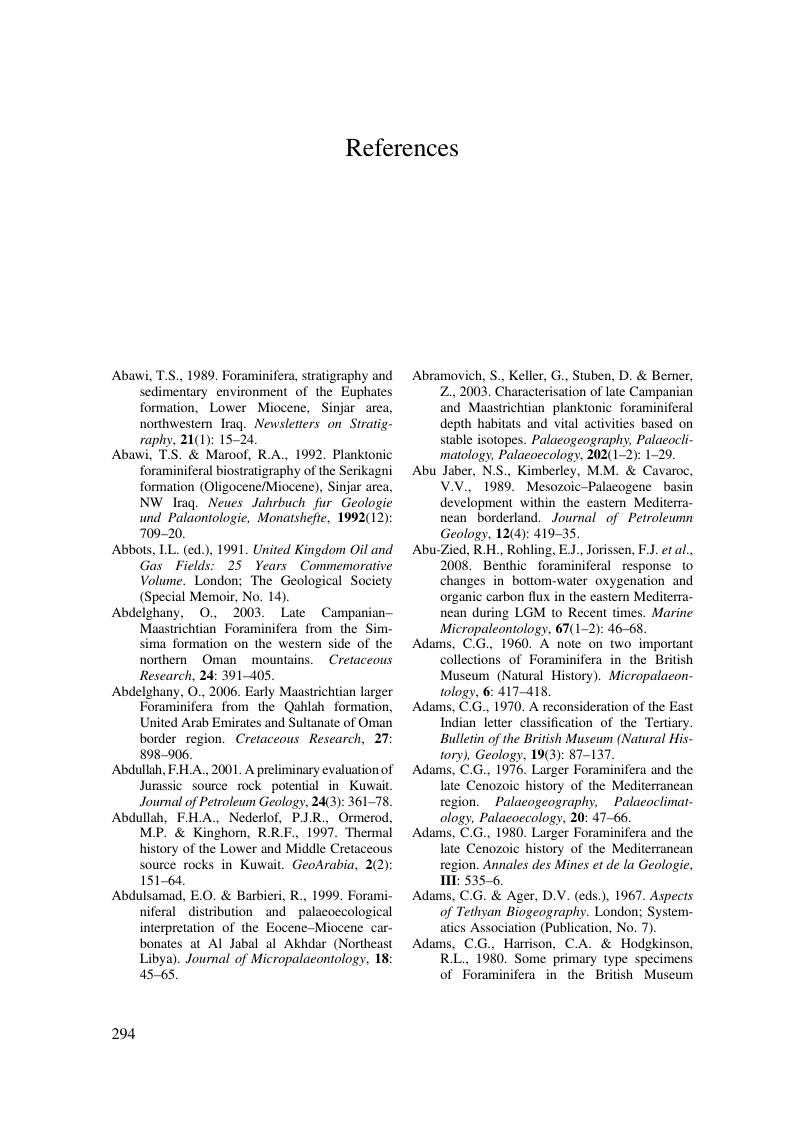Book contents
- Frontmatter
- Dedication
- Contents
- Preface
- Acknowledgements
- 1 Past, present and future foraminiferal research
- 2 Research methods
- 3 Biology, morphology and classification
- 4 Ecology
- 5 Palaeobiology, palaeoecology (or palaeoenvironmental interpretation)
- 6 Palaeobiological or evolutionary history of the Foraminifera
- 7 Biostratigraphy
- 8 Sequence stratigraphy
- 9 Applications and case studies in petroleum geology
- 10 Applications and case studies in mineral geology
- 11 Applications and case studies in engineering geology
- 12 Applications and case studies in environmental science
- 13 Applications and case studies in archaeology
- References
- Index
- References
References
Published online by Cambridge University Press: 05 December 2013
- Frontmatter
- Dedication
- Contents
- Preface
- Acknowledgements
- 1 Past, present and future foraminiferal research
- 2 Research methods
- 3 Biology, morphology and classification
- 4 Ecology
- 5 Palaeobiology, palaeoecology (or palaeoenvironmental interpretation)
- 6 Palaeobiological or evolutionary history of the Foraminifera
- 7 Biostratigraphy
- 8 Sequence stratigraphy
- 9 Applications and case studies in petroleum geology
- 10 Applications and case studies in mineral geology
- 11 Applications and case studies in engineering geology
- 12 Applications and case studies in environmental science
- 13 Applications and case studies in archaeology
- References
- Index
- References
Summary

- Type
- Chapter
- Information
- Foraminifera and their Applications , pp. 294 - 373Publisher: Cambridge University PressPrint publication year: 2013



